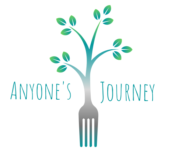In a world dominated by extreme exercise routines and unattainable body standards, navigating physical activity on an eating disorder journey can be a battle.
Our team of registered dietitians is committed to helping individuals learn how to enjoy working out while fostering a positive relationship with their body.
This blog provides knowledge and encouragement for those navigating the delicate path of recovery from eating disorders or disordered eating. It offers insights, expert guidance and movement ideas centered around the power of joyful movement.
Keep reading to embrace every step as a celebration of self-love as you pursue a balanced and joyful life.
What is Joyful Movement?
Joyful movement is the practice of engaging in physical activity for feelings of joy, rather than solely for the purpose of “burning calories” or “shedding pounds”.
On some days, joyful movement can be a sweaty exercise class while other days are filled with gentle movement such as yoga or meditation. There are no strict rules or routine with joyful movement. Instead, activity is driven by internal body cues.
As a core principle of intuitive eating, engaging in joyful movement is for individuals seeking to learn to trust their bodies, embrace internal cues and foster a sustainable approach to well-being.
Related: Mindful Eating vs Intuitive Eating
Benefits of Joyful Movement
Joyful movement has the power to elevate mood, reduce stress and enhance mental clarity. The release of endorphins during activities such as dancing acts as a natural mood booster.
In addition, the joy associated with activities can transform the perception of exercise from a chore or responsibility to a source of pleasure. This can foster a more positive attitude towards physical activity and appreciation toward your body.
Physiologically, movement can promote improved cardiovascular health, increased flexibility and improved muscle strength. The positive emotions can also contribute to a reduction in cortisol levels to aid in stress management and promote mental resilience.
Frequently Asked Questions
Is joyful movement the same as exercise?
While joyful movement and traditional exercise routines share similarities, they are not the same.
Exercise is a broader term that often involves structured or repetitive activities for the primary purpose of improving physical health.
On the other hand, joyful movement is a more inclusive and flexible approach that emphasizes enjoyment. Instead of focusing on routine, the emphasis is on finding activities that bring joy and sense of well-being.
The type of activities and length of movement is driven by internal cues instead of a structured routine.
Why is joyful movement important?
Joyful movement not only enhances mental well-being and promotes a positive mindset, but it starts to build a long-term commitment to staying active.
It also allows for a shift in perspective, which can contribute to improved self-esteem and an improved relationship with your body.
Lastly, our clients find that joyful movement is important because it allows people of all fitness levels and abilities to participate without judgment. It helps to build a community of individuals that is focused on spreading joy and positivity.
How do you find joy in movement?
There is not a secret code in finding joy in movement. In fact, it is a deeply personal journey that begins with self-discovery and learning which activities resonate with your preferences.
The best place to get started is by exploring various forms of movement. From there, you can listen to your internal cues and understand which forms genuinely bring a sense of happiness and fulfillment.
You may also want to consider the environments surrounding you during movement. For example, are you in a sunny park, cozy living room or a dark exercise studio. This could impact the feelings you have toward that form of exercise.
Over time, you can uncover the joy in each step, jump or stretch to create a positive relationship with physical activity. Keep reading for more tips on how to get started with joyful movement!
Tips To Get Started
- Honor Preferences: Take a moment to reflect on activities that currently bring you joy or that you have interest in engaging with in the future. Whether it is dancing, hiking or playing a sport, start to identify movements that resonate with your interests. You can keep a mental list of these activities or write in a journal if that is helpful.
- Smart Small: Begin with small, manageable steps to avoid feeling overwhelmed with movement. Incorporate small bursts into your day or week and gradually increase the duration as you feel comfortable. This can look like a 10-minute walk or 5-minute yoga practice to kickstart your day.
- Incorporate Variety: As you start to learn which activities bring you joy, incorporate different forms throughout your week or month. This will prevent monotony and help you to discover additional forms of movement.
- Invite Friends: Having a supportive group can enhance the experience and motivate you to continue on your journey. Share the joy with close friends and family or aim to meet new people by taking a class.
- Listen to Your Body: Pay attention to how you feel before and after the activity. You can then adjust activities based on internal cues and comfort level. Prioritize activities that leave you feeling happy rather than worn out and exhausted.
- Celebrate Progress: As you start to focus on joy rather than routine, also shift the focus to progress over perfection. Celebrate the small victories and give yourself grace as you explore and learn your preferences.
30 Ways to Practice Joyful Movement
Incorporate any of these joyful movement ideas into your day, week or month!
- Dancing in a class or in your living room
- Hula hooping
- Jumping on a trampoline
- Walks in nature
- Biking on a trail
- Yoga class or meditation
- Rock climbing
- Salsa dancing
- Skipping rope
- Volleyball
- Rollerblading
- Hiking
- Tag
- Yardwork
- Walking in a park
- Golfing
- Ziplining
- Water aerobics
- Climbing trees
- Zumba
- Kickboxing
- Aerial yoga
- Pilates
- Swimming
- Jogging on a beach
- Dodgeball
- Tennis
- Obstacle courses
- Walking the dog
- Playing a sport
All Eating Disorders Require a Personalized Approach
The information shared in this blog is for educational purposes and to help you gain a better understanding of how to enjoy movement on your journey to recovery.
Anyone’s Journey specializes in eating disorders and disordered eating with the approach that short strides result in long term possibilities. Our clinicians are also experienced in helping individuals that desire lifestyle modification or are navigating chronic diseases.
It is never too early, nor too late, to seek guidance on how to help someone with an eating disorder. Contact us by calling 612-638-2778, emailing contact@anyonesjourney.com or completing our New Client Form below.

